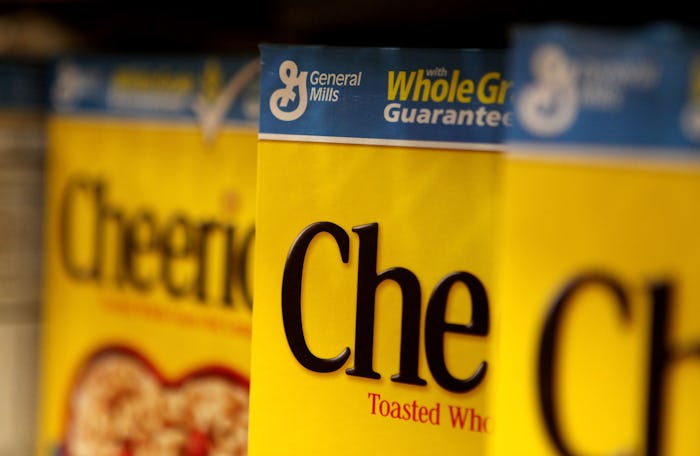News

Is The “Bring Back The Bees” Campaign Harmful?
Anyone who's been on the Internet in the past week or so has probably heard about Cheerios' "Bring Back the Bees" campaign. The campaign aimed to give away 100 million seeds to draw awareness to the declining pollinator population, and it's received a ton of click-worthy coverage. According to the campaign's website, the company has now given away 1.5 billion seeds — and it's totally out of stock. But as further details about the campaign emerge, it's now facing some backlash. In particular, many are wondering — does the Cheerios "Bring Back the Bees" campaign use invasive species in the seed packs they're sending out?
Romper reached out to General Mills about the controversy, and received the following response from a Consumer Relations Representative:
The flower varieties within the Bee Friendlier Mix were selected for their flowers which produce nectar and pollen that are attractive to bees and other pollinators. The mixture contains annuals, biennials, and perennials that produce flowers throughout the entire growing season (early, mid, and late) in a wide range of colors.
The seed varieties in the mix are not considered invasive.
But even with that assurance, some are still concerned the eye-popping number of seeds sent out may harm local environments if they are not planted with care.
According to the Tech Times, it turns out that the seeds General Mills is mailing out as part of the campaign may not be suitable in all regions. That's why people are worried that many of the wildflowers that could result from the seeds are invasive in nature.
The site gave one example of a wildflower that many like, but that shouldn't be planted just anywhere: the Forget-Me-Not plant. It's apparently banned in the state of Massachusetts, because it's considered a noxious weed. Tech Times also listed the California poppy as a problematic plant, as it's listed as an "invasive exotic pest plant" in southeastern states.
According to CBC News, the following are included in the mixes, as provided by Prince Edward Island's Veseys Seeds, a supplier of the free seeds:
The mix includes Chinese Forget-Me-Not, Siberian Wallflower, Orange California Poppy, Purple Coneflower, Single Mix China Aster, Corn Poppy, Lance leaved Coreopsis, Blue Flax, Baby Blue-Eyes, Globe Gilia, Indian Blanket, Tidy-Tips, Plains Coreopsis, Tall White Sweet Alyssum, Lavender Hyssop, Fleabane Daisy, Forget-Me-Not, New England Aster, Bergamot, and contains annuals, biennials, and perennials that produce flowers throughout the entire growing season in a wide range of colours.
To be fair, the campaign is raising awareness for a pretty important issue. The official website for Bring Back the Bees lists statistics to make consumers aware of the problem, such as the following:
- 1 in 3 bites of food we eat is made possible by bees and other pollinators
- 44% of bee colonies in the U.S. collapsed in 2016
- More than two thirds of the world’s crop species rely on pollinators
And as part of the campaign, the company is committed to having its oat farms host around 3,300 acres of nectar- and pollen-rich wildflowers by 2020. The company has said the varieties it will use are full of the nutrients that bees and other pollinators need "to stay strong."
But concerns about the seeds being sent out including invasive species remain for some. Lifehacker spoke with an ecologist, Kathryn Turner, who specializes in invasive plants, for her thoughts on the campaign and the flower seeds included in the giveaway:
Invasive species can out-compete the natives they encounter. They can take up all the space and use up all the resources, they can spread disease, and cause other physical changes to their new homes, all of which can have detrimental effects on native species, and on humans.
She also stated that no plant is "inherently bad." People who are receiving the seeds just have to be careful about researching what's safe for their own garden before they plant the freebies.
The best thing anyone who's ordered the seeds from the campaign can do is some research, followed by or including a call or visit to a local gardener to find out what their best options are for planting in their area. Check out the USDA's PLANTS Database to get started, but, no, you won't ruin your local environment by helping out with Cheerios' Bring Back the Bees campaign.